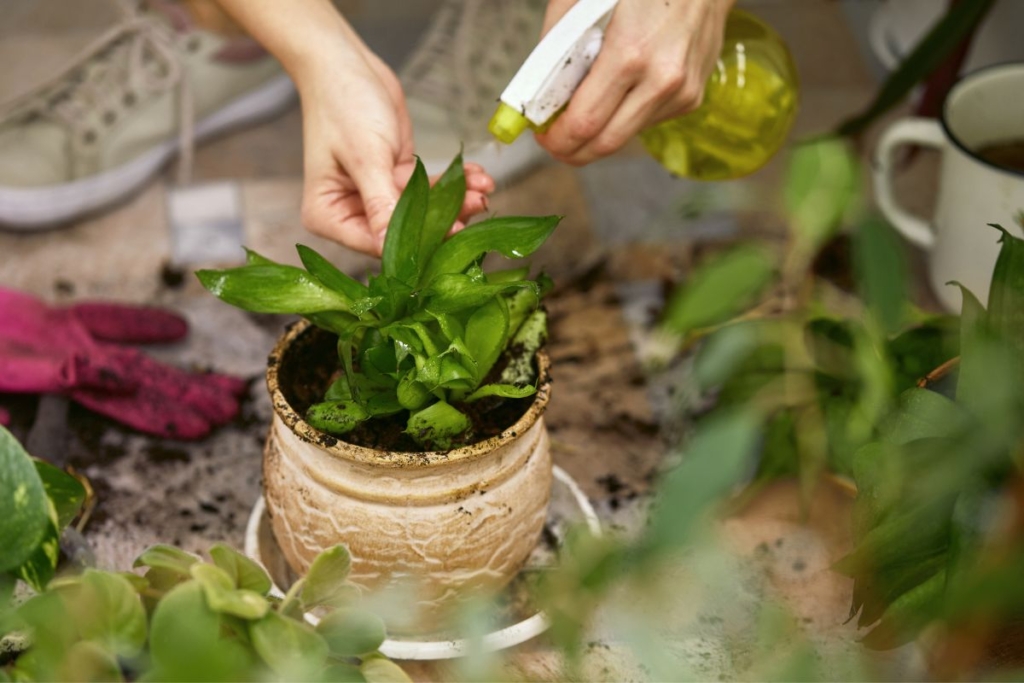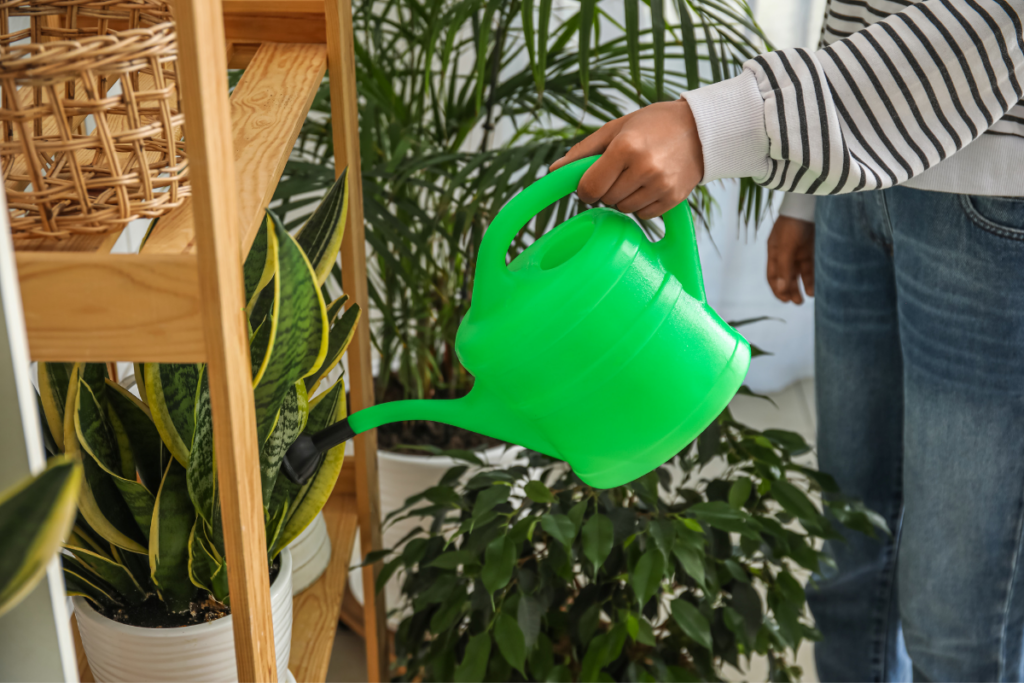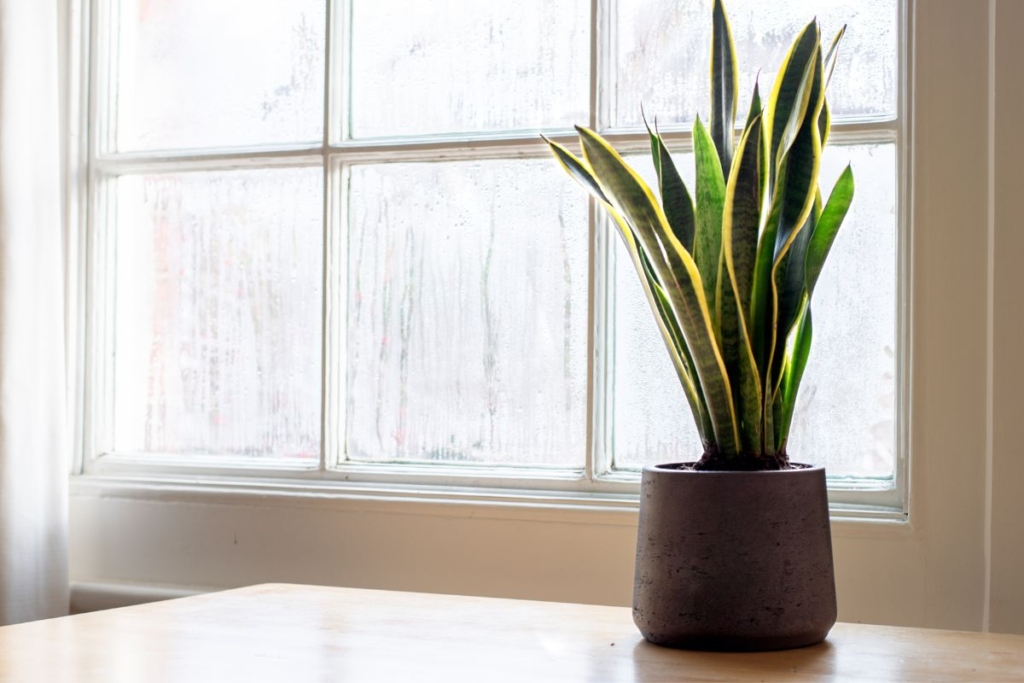Do snake plants like to be misted? It’s a question that many of us have asked ourselves at some point. After all, these plants are known for their hardy nature and low-maintenance care requirements. Do they like the extra moisture or is it too much for them?
In this article, we’ll explore the science behind watering snake plants, as well as discuss how misting affects them. We’ll also look at factors like humidity levels and soil type so you can make an informed decision about whether or not to mist your beloved companion.
Through this journey, we’ll be able to understand the needs of snake plants and learn how to take care of them in the best way possible. So, let’s get started and uncover the truth about this fascinating plant—do snake plants like to be misted?

Contents
How Much Humidity Does A Snake Plant Need?
I’m often asked if snake plants like to be misted. Before I answer that, it’s important to understand the humidity levels they need in order to thrive. The ideal level of humidity for these desert plants is between 30–50%. This range of humidity levels should provide enough moisture without encouraging diseases or pests.
When considering the average humidity levels indoors, most homes are typically around 30–70% which is considered ideal for the snake plant. Too much humidity can cause the plant to become moldy or rot, while too little humidity will cause the leaves to become crispy and dry. Therefore, it is recommended to monitor the humidity levels and adjust accordingly to ensure optimal growth and health of the snake plant.
So, while misting your snake plant may seem like an easy way to add moisture to the air, it might not be necessary if you’re able to maintain an optimal level of humidity within its environment.
Do Snake Plants Like To Be Misted?
Well, it seems like snake plants don’t need much humidity after all! Contrary to popular belief, misting a snake plant is not necessary for its growth and health. In fact, the additional water from misting can be detrimental to their well-being. Snake plants are drought tolerant and do best with minimum water requirements. While they may appreciate some extra moisture in the air due to increased water vapor or light misting of water droplets occasionally, providing too much additional water can cause root rot and other issues.
Misting snake plants can have beneficial effects, such as keeping the leaves hydrated and creating a humid environment. However, too much misting can lead to leaf spots and other fungal issues. These brown spots can cause the leaves of the plant to become discolored, distorted, and eventually die and fall off.
If you do choose to mist your snake plant, it’s important to do it sparingly and allow the foliage to dry out completely before misting again. Also, make sure you don’t mist the plant too close to the leaves, as this can cause water droplets to collect and create the perfect environment for fungal growth.
So there you have it: while adding some extra humidity through misting might feel nice for us humans (especially those living in drier climates) our favorite succulent friend prefers a less humid atmosphere than we would think!
What Is The Proper Way To Water A Snake Plant?

Watering a snake plant is essential to its health and growth. It’s important to provide consistent care, while also avoiding overwatering or underwatering the plant. Here are some tips on how to water your snake plant properly:
How often should you water?
- Water your snake plant every 1-2 weeks during spring and summer when it’s actively growing and needs more moisture.
- In wintertime, reduce the watering frequency to once per month or even less if the soil remains damp from the last watering session.
- Monitor the topsoil for dryness before each watering session—if it hasn’t fully dried out, wait another week before rewatering.
- Avoid leaving your snake plant in standing water as this can lead to root rot and other issues due to soggy soil conditions.
What type of water should I use?
- Tap water contains salts, chlorine, minerals and fluoride which can build up over time in the soil and damage the roots of your snake plants (and other indoor plants).
- To avoid any adverse effects of these chemicals, opt for distilled or aquarium water instead.
How much water do I need?
- When you do decide to give your snake plant a drink, make sure that you thoroughly saturate the entire potting mixture with an adequate amount of water so that excess drains out through the bottom holes into a saucer beneath the container.
- You want to ensure there aren’t any ‘dry pockets’ within the soil; otherwise, those areas may remain parched until their next bout with hydration!
- That said, don’t let too much residual moisture linger around after draining—remember what we discussed about avoiding overly wet/waterlogged soils!
In short, stick to a consistent watering routine based on seasonality but be mindful not to drown your beloved green friends—they prefer drier bouts without neglectful amounts of H20!
Should Snake Plant Soil Be Moist?

When it comes to snake plants, there is a common misconception that they need lots of water and humidity. In reality, too much moisture can be detrimental to the plant’s health. So while misting your snake plant may sound like a good idea—in truth, it isn’t necessary.
Snake plants prefer dry soil with low levels of moisture at the surface. To achieve this, use well-draining soil so excess water doesn’t stay around the roots for too long after watering. If you notice any standing water or puddles on top of your potting mix, make sure to adjust accordingly by adding more drainage material such as perlite or gravel. Additionally, always check the soil before you decide to water again; if it still feels damp don’t add additional moisture just yet since over-watering can cause root rot or other diseases in your plant.
The key takeaway here is that keeping an eye on the moisture levels in your snake plant’s soil is important for its overall health and well-being. Make sure that enough air circulates through the potting mix by allowing some time between watering sessions so that everything stays balanced and healthy!
Suggested reading:
How To Separate Snake Plant: Step-By-Step Guide
How Often Do Snake Plants Need To Be Watered?
Snake plants are quite resilient and can survive in a variety of environmental conditions, but they do have their preferences. To keep this hardy plant healthy, it’s important to understand what its ideal environment looks like.
First, snake plants need relatively low-humidity environments. They don’t require misting or any other kind of humidifying treatment as this can lead to fungal diseases and root rot. If you live in a very dry climate, make sure the air around your plant is not too arid by using a humidifier.
Second, most experts recommend watering your snake plant about once every two weeks when you’re growing them indoors. Make sure the soil is completely dried out before re-watering; otherwise there will be too much water for the roots to absorb which could cause root rot and other problems. You may find that your soil dries slower during winter months than in summer months so adjust accordingly.
Thirdly, ensure that your potting mix has good drainage to avoid overwatering; sandy soils work best here as they allow excess moisture to easily escape from the potting mix quickly. It’s also best if you use lukewarm water for irrigation because cold temperatures can shock the delicate roots of these succulent plants!
And finally, try to keep environmental conditions consistent—temperature fluctuations should be avoided as well as extreme changes between light levels. Snake plants thrive in an environment where there aren’t rapid shifts in different parameters such as light or temperature; making sure things stay constant helps create the ideal conditions for thriving indoor plants!
How Many Days Can A Snake Plant Go Without Water?

Snake plants (Sansevieria trifasciata), commonly referred to as mother-in-law’s tongue, are some of the most drought-resistant plants around. They are native to parts of Africa, Madagascar, and southern Asia, where they are accustomed to long periods without water. So how long can a snake plant go without water?
The answer depends largely on the environment in which the plant is living. In hotter, drier climates, a snake plant may only go a few weeks without water in the summertime, while in cooler, more humid climates, it can go up to two months. In addition to temperature, humidity, and sunlight levels can also affect how long a snake plant can go without water. Low humidity levels can cause the soil to dry out faster, while bright, direct sunlight can cause the leaves and soil to evaporate moisture more quickly.
When watering a snake plant, it is important to wait until the soil is completely dry before watering again. Over-watering can lead to root rot, which can be fatal to the plant. A good way to test soil moisture is to stick your finger in the soil. If it’s still damp, it’s best to wait a week or two before watering.
Overall, snake plants are very resilient, and can survive long periods without water. However, it is important to be aware of the environment in which the plant is living and adjust watering accordingly. By providing adequate sunlight, humidity, and watering only when the soil is dry, your snake plant should stay healthy and happy for years to come.
Conclusion
In conclusion, snake plants are low-maintenance plant that doesn’t require too much fuss. As long as you remember to water them every two weeks or so and let the soil dry out between waterings, they will thrive in your home. You don’t need to mist them unless it’s particularly dry inside—then once a week should do the trick!
Although snake plants can take some neglect, treating them with care is still important. A study by NASA found that these hardy house plants were able to reduce indoor air pollution levels by up to 47%. This means that caring for your snake plants could actually bring health benefits beyond their decorative value.
Overall, I hope this article has offered helpful advice on taking care of your own snake plants at home. With a bit of effort and love, they’ll provide beauty and air purification potential all year round!
